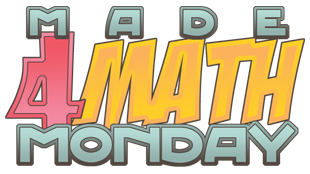Discovering The "Brandon" (Pythagorean) Theorem
This lessons is not a new idea... I've seen it online lots of places. But here is how I organized it and it worked well, so I thought I would share.
First, cut out squares using graph paper. Have a baggie (I love ziploc bags for organizing) for each pair of students. In each baggie I put 2- 3x3 squares, 2- 4x4 squares, 2- 5x5 squares, 1- 12x12 square, and 1- 13x13 square.
Next, I had students create an isosceles triangle using a 2- 5x5 square and 1- 3x3 square. We discussed that this is a isosceles triangle AND an acute triangle.
I then told students that we would be working with only right triangles today. I challenged them to create 2 right triangles using the squares I provided them. I gave them some work time (this took about 10-15 minutes). With the squares they have, they are able to create two: 3-4-5 and 5-12-13.
I walked around and answered questions and helped students that had misconceptions (a common one was that they could do a 3-3-4 or 3-3-5). After students had discovered at least 1 of the triangles, we discussed as a class the two triangles and they had them out in front of them.
Finally, we discussed the area of the squares in the 3-4-5 triangle. The areas are 9, 16, and 25. I gave students quiet think time to see if they could come up with a number sentence that related the three numbers to each other. In every class there were several students that noticed you could add 9 and 16 to equal 25.
Whichever student shared their "theorem," I temporarily named it after them... for example in 4th period we called it the "Brandon Theorem." We then tested the Brandon Theorem on the 5-12-13 triangle, and guess what, it works! :)
I explained that unfortunately, there was a guy that discovered this before Brandon and his name was Pythagoras. Therefore, he gets naming rights and it is really called the Pythagorean Theorem. We took notes in our notebook to record our findings and that was it.
This lesson went really well and the students were into it especially because they felt like they had really discovered something!








Comments
Post a Comment